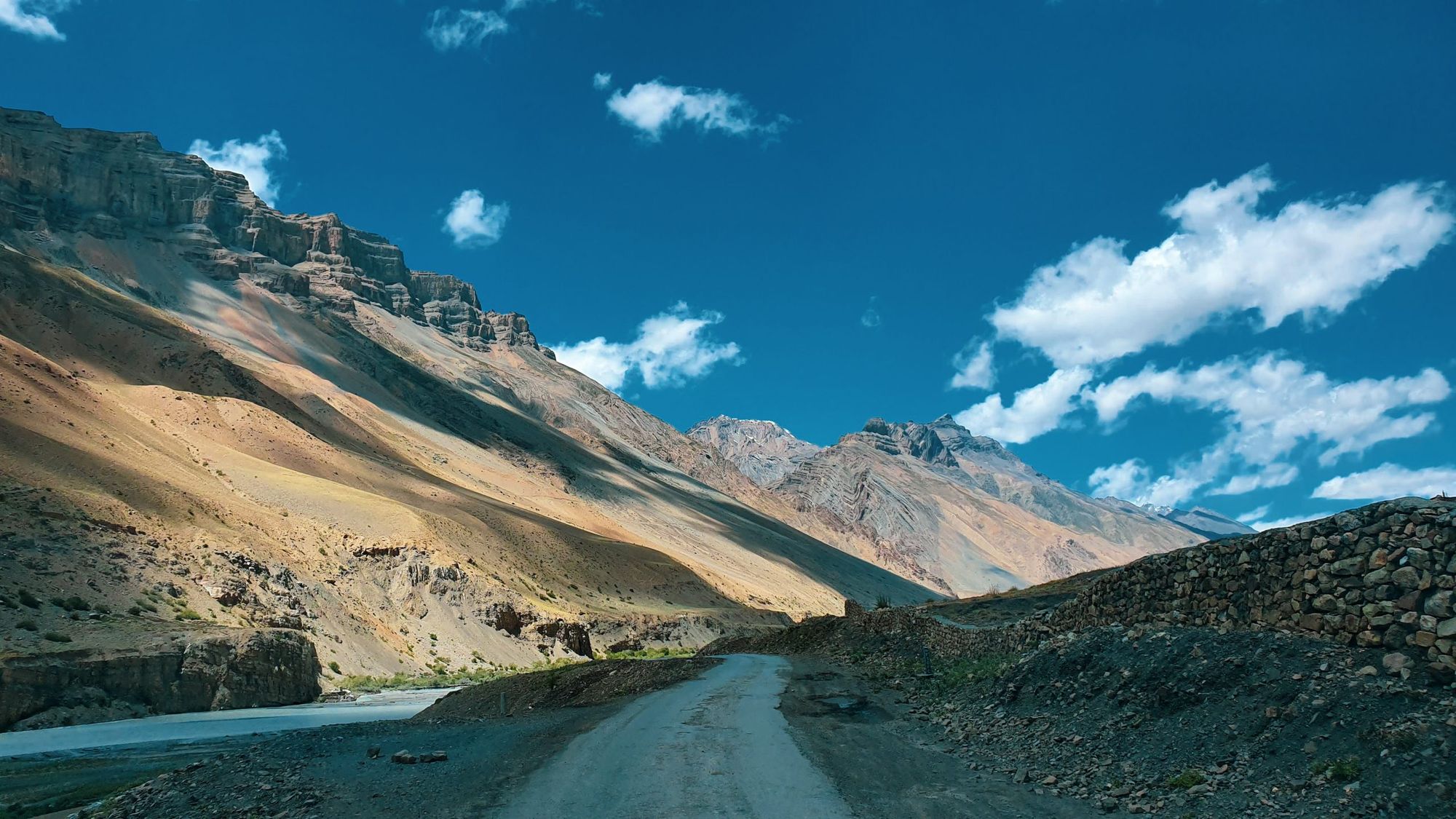If you're planning your trip, don’t forget to check out the how to reach Spiti Valley guide for a step-by-step travel roadmap including key routes, transport modes, and best seasons.

The journey to Spiti is equal parts thrilling and grueling. Whether you're coming from Manali or Shimla, each route offers spectacular views—and unpredictable terrain. Many travelers opt for a circular route: entering from Shimla and exiting through Manali. This is considered safer due to better acclimatization to high altitudes. But, road conditions on both sides vary significantly with the season. For those adding cultural exploration to their itinerary, a stop at the ancient Tabo Monastery in Spiti Valley is a must, and knowing the road conditions beforehand can help plan such detours wisely.
Road Conditions: Shimla to Spiti Route
The Shimla-Kinnaur-Spiti route is considered to be the more stable option. It stays open for most of the year, except during occasional winter landslides or heavy snowfall. The road from Shimla to Kaza (Spiti’s main town) via Kalpa, Nako, and Tabo is mostly paved but narrow and prone to rockfalls. Expect a mix of smooth patches, sharp turns, broken stretches, and unguarded cliffs.
From Karcham to Nako, you’ll face rough terrain. Certain sections might be dusty and riddled with potholes, especially during the monsoon. But road maintenance is better here compared to the Manali side. Be prepared for longer travel times than what GPS suggests—what looks like a 6-hour drive may take 10.
Manali to Spiti Route: The Risky Beauty
This route is typically open from June to mid-October. It is shorter but more treacherous. The road from Manali to Kaza goes over the high-altitude passes like Rohtang and Kunzum, which are known for unpredictable weather and snow blockage. The road near Batal and Losar is often in poor condition, with stream crossings, landslides, and muddy tracks.
Travelers often report that this stretch tests both the vehicle and the driver’s skills. 4x4 vehicles or off-roading bikes are recommended. Avoid this route during early or late seasons unless you're well-prepared and experienced.
Monsoon and Winter Challenges
Spiti Valley lies in a rain shadow region, but the roads leading to it—especially near Kinnaur and Manali—can get washed out or blocked due to monsoon rains. Between late July and early September, landslides and flash floods are real risks. Winter brings a different challenge. From November to March, most roads are snow-covered and impassable. Even locals rely on satellite phones and stocked supplies during this time.
If you're booking your trip during shoulder seasons, always check with local authorities or drivers for road updates. It's also wise to keep a buffer day in your plan in case of delays or detours.
What Kind of Vehicle Is Best?
Small hatchbacks can manage on the Shimla route during dry months, but an SUV is strongly recommended for both safety and comfort. If you're on a bike, choose one with good ground clearance and powerful brakes. Many travelers rent Royal Enfield motorcycles or 4x4 SUVs for tackling the terrain. A skilled local driver is a big plus, especially for those unfamiliar with mountain driving.
Travel Tips for Safe Journey
Download offline maps – Network coverage is patchy at best.
Carry extra fuel – Petrol pumps are sparse beyond Kaza.
Pack warm clothing – Even in summer, weather can turn cold quickly.
First aid and medicines – Due to high altitude, AMS (Acute Mountain Sickness) is common.
Plan with the Right Package
Road conditions in Spiti Valley can be daunting, but with proper planning, they become part of the adventure. Instead of managing logistics yourself, many travelers opt for curated Spiti Valley tour packages from Mumbai or Delhi. These packages take care of travel, accommodation, permits, and sometimes even acclimatization breaks—ideal for first-time visitors and families.



